Leading cash management experts met recently in New York to discuss the key issues in an industry thats ever more crucial. Global Finances publisher, Joseph Giarraputo, moderated.
Global Finance:
How does the US Patriot Act affect you and your clients operations?
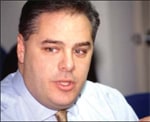
|
|
|
Alfred Carpetto
, senior vice president, treasury services sales executive, JPMorgan: It is a necessary and important regulation, but the process can be cumbersome. The extra paperwork has slowed some processes and implementations. It is also a little frustrating for clients when they have to provide information multiple times.
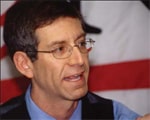
|
|
|
Daniel Rosenstein
, head of global cash management US sales, corporates, Deutsche Bank: Its essentially an extension of the existing money laundering laws. Youll find most American corporations and financial institutions are supportive of the US Patriot Act.
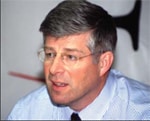
|
|
|
Al Briand
, managing director, head of product management, global payment services, Bank of New York:We are becoming oriented to the fact that we just have to integrate these things into the way we do business, and they are, in fact, the right kinds of things to do. Customers know this and are dealing with the idea that it is all part of the process.
Christopher Ward
, senior vice president and manager of product and design delivery, Wachovia Treasury Services: The Patriot Act presents new challenges for screening, monitoring and record-keeping transactions. We are not used to these additional processes in the funds transfer world, but we understand that, as in any industry,security and its associated costs are a critical aspect of the business.
CARPETTO
: Over time the process will be refined and become more acceptable for us and the client.
BRIAND
: As we understand the evolution of the Patriot Act,and the more we can automate some of these processes, the burden on both the institution and customers will lessen.
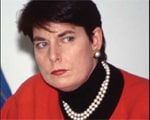
|
|
|
Abigail Feder
, managing director, JPMorgan Fleming Asset Management: In the investment management business we have such close contact with clients. The know your client process is critically important, and it certainly is a much more rigorous process with the new Act.
GF
: What advice do you give your corporate clients about their own treasury contingency planning?
Maria Mandler
, North American product management head, Citigroup: We saw that close up after 9/11. Not only did we shift work from the New York area, so did our customers.The corporates are saying, I have got to make sure that my capacity considerations are not just for what is operating at the site today but what could be required at any time.
Glen Solimine,
vice president, North American sales, XRT: To a lot of customers contingency planning used to seem very far-fetched. They are taking it a lot more seriously now. Theyre going through drills, theyre replicating the data and the programs that they are using, and theyre ensuring that the responsible personnel know what their role is. This is a level of diligence that many had not practiced before.
FEDER
: One of the basic things people have had to think about in a different light is the location of their disaster recovery sites.
ROSENSTEIN
: We suggest companies follow the three Ps of business contingency planningpeople, process and practice.People:Allocate people with common critical skills across various locations. Process: Image all critical documents into an Internet-based electronic archive to provide access from multiple locations. Practice: Test your procedures to ensure proper execution.
BRIAND
: The disaster that you plan for might not be the one that you get. You need to really be flexible.One lesson we learned is around telecommunications. Even a backup facility may be affected by a disaster. You really have to look at alternate providers.
FEDER
: It is important to not just know that you can click a button and use a system but to understand what the process actually entails. For a clientfor all of us, in factto understand what it takes to settle a trade or put a wire togetherwhat are the steps besides just clicking sendis very important.
WARD:
Many customers are looking to get rid of their proprietary formats. They are recognizing the need for more than one disbursement bank and for more than one collection bank. Banks customers are recognizing the critical importance of building redundancy into their systems and having multiple means of routing data transmissions.
SOLIMINE
: People should also be aware of the events that could trigger a contingency plan. It probably wont be something that happens to them directly. Adherence to standards really helps. Moving a process or workflow from one provider to another becomes much easier.
CARPETTO
: Our clients are not only looking to us for advice, but they are looking for tools.We have taken our internal contingency system and turned it into an operational risk management product.We are making our clients aware that we have taken the measures to be prepared ourselves, and we are also educating them about their own treasury readiness.
GF
: What new developments are taking place in working capital management?
CARPETTO
: There is more general acceptance of looking at working capital management models to understand where the banks can play a valued role. In light of the continuing economic slowdown, working capital efficiency is front and center. Less business activity means companies have less access to liquidity from traditional external sources. Additionally, historically low interest rates are yielding negligible investment returns.
SOLIMINE
: We have seen a fundamental shift in corporations toward active management of working capital as opposed to just measuring it. It parallels the growth of customer relationship management. Corporate treasurers find that they have to implement new tools to help them understand the processes theyre managing.When they do, they get the ability to really manage working capital, which they did not have before.

|
|
|
MANDLER
:When you look at something like receivableswhere you can now utilize a global e-billing solution that might have accounts receivables matching, may utilize aspects of netting and still be able to give customers in Spain the ability to pay via direct debit and a customer in Japan to pay by cashyou can see the principles are not new but the techniques are.
ROSENSTEIN
: Corporate treasurers use newer tools such as treasury workstations and ERP systems to help them do their job more efficiently and improve forecasting. This enables treasurers to better manage working capitali.e., borrow less and invest longer term. As a result, treasurers have more time to play an important role in supplychain management.
FEDER
: Many clients are realizing they have a pool of assets that can be looked at globally. Theyre also thinking about the risks. Treasury teams tend to be every day asked to do more with less. So they increasingly need to rely on outsourcing because they physically cannot achieve what is required.
BRIAND
: What clients perceive as possible has been elevated over the years by virtue of the new tools and processesand globalization. Less time is spent gathering information, and more time is available for analysis. Working capital management is still just solid fundamentals and good treasury management,but we can get to a better place than we have been.
SOLIMINE
: The fundamentals of forecasting have not changed much, but the practice of liquidity planning or total working capital planning based on a forecast is taking off. Through better integration with their business processes, a proactive treasurer can better see and better control the lowest cost of funding their plans.
CARPETTO
: It is up to the banks to provide companies with the tools to help them make sure theyre capturing and utilizing every excess dollar they can get their hands onwhether those funds are in the US, Latin America, Europe or Asia. We have to understand exactly what they need and then offer a viable solution.
GF: Treasury outsourcing is a concept several major banks are promoting. How is it progressing?
WARD:
Customers continue to outsource receivables matching to their financial institutions and to use integrated disbursement solutions. Outsourcing is taking off quite well in certain niche approaches; however, customers are not outsourcing their entire treasury operation.
FEDER
: Customers look to whoever can provide the right strategic partnership, be it somebody who can provide a niche solution for one component or multiple resources.
CARPETTO
: Customers are sometimes slow to pull the trigger. They understand the benefits of it but feel they might be giving up control. Some of our European clients fully understand and are very comfortable with outsourcing, while in the US they tend to be more cautious.
MANDLER
: Its more about the size of the company or unit. We find European multinational subsidiaries in the US are very interested in outsourcing. Why? It is a smaller unit for them versus their home country.Youll find it tougher to persuade a US multinational to outsource its global treasury function, but they are open to outsourcing discrete units and spinoffs.
ROSENSTEIN
: Outsourcing is an iterative process that goes from something simple like controlled disbursements and lockbox to integrated payables outsourcing to multi-entity liquidity management. We are starting to see in the States a greater tendency to outsource more complex processes.
BRIAND
: If, as a provider in these partnerships, we can offer automated solutions that give them more leverage at lower cost, then we see there is willingness to do it. But the decision-making needs to be deliberate because there is risk in not doing it right.
SOLIMINE
: As corporate treasuries look to more actively manage their financial supply chain, they need to carefully weigh the control and visibility issues of all the moving parts to get the results they aim for. If it matches the corporate culture, it may make sense to outsource some tasksespecially if the corporation is not willing or able to invest to get the results.
FEDER
: On the investment management side, clients are really looking for help.Many are managing in some cases billions of dollars of assets where there is really only downside for them to do it themselves. They can see the power of outsourcing.
GF
: When you combine outsourcing with contingency planning, is there concern that banks are putting too many eggs in one basket?

|
|
|
WARD:
It comes back to standardization. Customers need to know that they are using standard processes because they want to feel comfortable about being able to use another financial institution if something goes awry with their primary relationship.
GF
: Not all countries payment systems are equal, and efforts to link them upsuch as Continuous Linked Settlement [CLS]have proved costly and time consuming.
CARPETTO:
For the banks it has been time consuming and costly, but not so much for the clients. Is it bearing fruit? The answer is yesfor now, but time will tell.
MANDLER:
Financial institutions are much more interested now. CLS is really working, and it is encouraging that corporates, who are looking at it in addition to other benefits to reduce their credit usage for FX, want to make up their
minds fast.
ROSENSTEIN
: It will be interesting to see if the market moves toward pricing relative to riskpricing less for CLS-related transactions than for non-CLS-related transactions.
BRIAND
: I think CLS will bear fruit. But it is incumbent upon us as providers to communicate the benefits. As we see more of that, CLS will start to really pick up.
WARD
: When you look at other countries outside of Europe and the US, there is a lot of energy about implementing CLS. It shows that eventually CLS will bear the fruit we are expecting it to produce.
GF
: What kind of progress can we expect to see for corporates to connect more seamlessly with their banks?
ROSENSTEIN:
Corporates should establish applications using standardized formats and Internet connectivity to facilitate redundancy and migration.
WARD
: The implementation of enterprise resource planning [ERP] solutions has helped drive standardization into the banks and has made corporate customers more aware of standards. This is helping the push for greater connectivity.
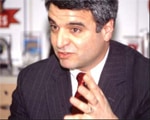
|
|
|
SOLIMINE
: The better treasury management systems already include a communications component that allows corporates to attain higher efficiencies by routing transactions though the best available source. Coupling that with the ability to deploy standard processes within their organization gives clients a kind of a straight-through control. For instance, if they want to create a wire transfer request going out to different banks, they want to have the same kind of process and control regardless of what bank it is going to or what connectivity is actually used in the background.
MANDLER:
We talked about being agnostic so much with regard to standards that sometimes I think we are making a religion out of being agnostic. Now there are groups coming up that seem to think existing standards initiatives are not moving fast enough and the content is not comprehensive enough.There is a difference between being standard and simply being non-proprietary. The key will be interoperability.
CARPETTO
: There continue to be many proprietary systems out there, so we are providing translation services to our clients. This allows them to deliver a file to us which we then translate for processing. We then convert it back into their format and return it.We feel its a value-added service that banks need to provide.
BRIAND
: Connectivity is fundamental to this whole working capital management issue. It relates directly to clients efforts to improve the standard with respect to working capital management.
FEDER
: We are trying to give clients easier access to something more than just the investment management component of what they need from us. Our treasury clients may need access to the FX team, for example, so we designed a global cash portal. It can help them deliver, say, accounting reports in a very tight time frame.
GF: In this low-interest-rate environment how do you manage clients treasury-yield expectations?
FEDER
: It comes down to helping clients build their resources and educating them so they can do what they are best suited to in a more efficient manner. Everybody is always looking for ways to be more efficient, so we sit down with our clients and work out the best way to manage different portions of their pools of assets.
MANDLER
: Our customers are looking for rate enhancement, and for that they need different instruments.So we deliver different instruments. And we offer tools that enable them to make the most of their global liquidity.
ROSENSTEIN
: In this environment, companies seeking to enhance yields need to look beyond returns and to focus on the efficiency and cost of managing a global treasury. Tools, such as multi-entity pooling, help companies automate manual processes, reduce infrastructure costs, deliver more timely and accurate information and ultimately reduce interest expense.
SOLIMINE
: In this environment we see our clients looking at their treasury operations to reduce risk, to implement workflows that improve decision-making, and model their alternatives to extract the maximum overall yield possible. When the investment yields are low, both transaction costs and the importance of efficiencies through automation have a relatively larger effect on results.
CARPETTO
: Our job has been to package the investment opportunities with other products to make it easier for customers to do business to make the overall process more efficient.We look to add value and maximize the clients yield on investments by linking it to the overall treasury process.
GF
: What is happening with treasury management technology investment at banks and corporates?
WARD
: Banks have maintained investment levels, particularly to support regulatory requirements and standard changes. But there are also investments being made to integrate our products better on the front end and deliver new services and capabilities. The poor earnings environment, though,from a corporate perspective, creates more of a challenge when it comes to investing in treasury.
BRIAND
: Investment levels have been maintained although diligence in ensuring a payback has increased. In fact, there is even more impetus to build on the new platforms, so we can eliminate older technology out of our clients offices.That benefits us because it is costly to work with legacy systems, and it benefits the client because the new technology serves them better.
CARPETTO
: We both build and acquire technology. In the past most banks would build everything, and that is no longer feasible. Now we look for opportunities where we can buy technologies and integrate them with our own products and systems. This helps us deliver the best solutions to the client and stay ahead of the curve.
SOLIMINE
: There is growth in spending on the corporate side, but companies are definitely more focused than ever on getting a rapid return on their investment. They want to turn all the information they have in their organization into something they can really see and use. When the solution offers demonstrable near-term business contributions and is integrated within their chosen ERP/BI [business intelligence] framework, dashboard or key performance indicators the funds are available.
MANDLER
: Many corporates have made large investments in ERP and put a substantial amount into treasury workstations. Before they spend on additional pieces, they want to make sure they are getting everything out of their existing systems.



